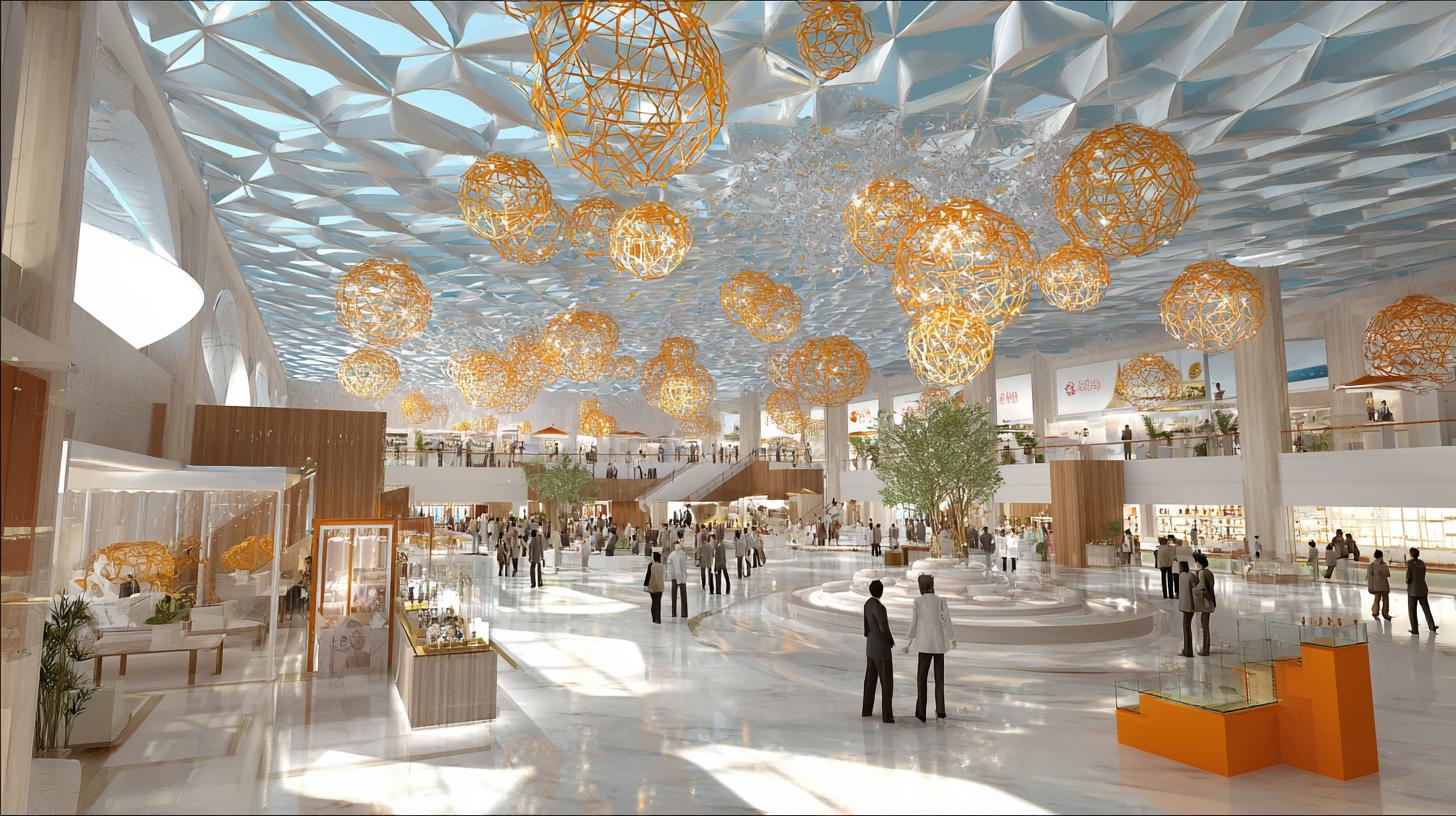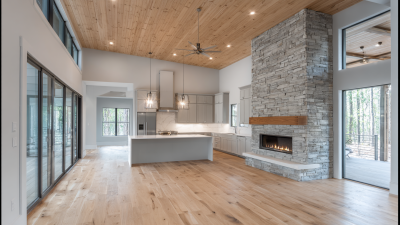Exploring the Future of 3D Interior Rendering at the 138th China Import and Export Fair 2025
As the global design and construction industries continue to embrace technological advancements, the significance of 3D interior rendering has become increasingly evident. According to the latest market research, the 3D rendering service market is projected to reach USD 1.1 billion by 2025, growing at a CAGR of 25% from 2020 to 2025. This growth is driven by the rising demand for visually engaging presentations and the need for efficient design processes in competitive markets. The upcoming 138th China Import and Export Fair in 2025 presents a pivotal opportunity to explore cutting-edge innovations in 3D interior rendering. Exhibitors and attendees alike will witness how these advanced visualization techniques are reshaping the way designers and architects communicate their concepts, enhance customer experiences, and streamline project workflows. As the industry moves toward greater integration of AR and VR technologies, the fair will undoubtedly serve as a showcase for transformative trends in 3D interior rendering, setting the stage for the future of design.

Innovative Technology Trends in 3D Interior Rendering Showcased at the Fair
As the 138th China Import and Export Fair approaches in 2025, keen attention is being directed toward the latest technology trends that are reshaping the landscape of 3D interior rendering. This year, exhibitors are expected to showcase cutting-edge advancements that leverage augmented reality (AR), virtual reality (VR), and artificial intelligence (AI) to enhance design visualization. According to recent industry reports, the market for 3D rendering services is projected to grow significantly, with estimates indicating a CAGR of over 25% from 2022 to 2027, driven by increasing demand in the interior design and architecture sectors.
Innovative technology trends such as real-time rendering engines have made it possible for designers to present their ideas dynamically, allowing for instant modifications based on client preferences. The integration of digital transformation technologies (DTTs) not only streamlines workflows but also enriches the client experience during the design phase. A systematic review highlighted how DTTs could transform traditional practices, mirroring trends seen in industries like museum exhibitions where immersive experiences attract larger audiences.
**Tips:** When exploring 3D interior rendering innovations, consider attending live demonstrations and workshops at the fair. Engage with industry experts to gain insights into best practices and emerging tools. Additionally, keeping an eye on cross-industry applications can provide valuable inspiration and broaden your design horizons.
Exploring the Future of 3D Interior Rendering at the 138th China Import and Export Fair 2025 - Innovative Technology Trends in 3D Interior Rendering Showcased at the Fair
| Technology | Description | Benefits | Potential Impact |
|---|---|---|---|
| Real-Time Rendering | Enables interactive viewing of 3D models with instant visual feedback. | Enhanced design iterations, improved client presentations. | Streamlined design processes in architecture and interior design. |
| Virtual Reality (VR) | Immersive environments that allow users to experience spaces as if they are physically there. | Increased engagement during client demonstrations. | Revolutionizing how spaces are sold and experienced. |
| Augmented Reality (AR) | Overlaying digital 3D models onto real-world environments through mobile devices. | Facilitated customization and design confirmation. | Bridging the gap between digital design and physical reality. |
| AI-Powered Design Tools | Leveraging machine learning algorithms for automated design suggestions and optimizations. | Increased efficiency and creativity in design processes. | Transforming the roles of designers and enhancing design innovation. |
| Cloud Rendering | Utilizing cloud computing resources for rendering 3D images and animations faster. | Reduced rendering times, cost-effectiveness, and accessibility. | Enhanced collaboration among teams across different locations. |
Key Players and Leading Brands in 3D Rendering at the 138th China Import and Export Fair
As the 138th China Import and Export Fair approaches in 2025, the spotlight will shine on the key players and leading brands in the realm of 3D interior rendering. This technology has rapidly evolved, driven by a growing demand for immersive visual experiences. Industry reports indicate that the global 3D rendering market is expected to reach USD 7.5 billion by 2025, growing at a CAGR of around 22%. Major players in the field, such as Autodesk, Chaos Group, and RenderZone, are set to showcase cutting-edge solutions that enhance the design and architectural visualization process.
Leading brands are investing heavily in AI-driven rendering solutions, which not only streamline workflows but also enhance the realism of interior spaces. A recent study highlighted that AI-powered rendering tools could reduce project completion times by up to 30%, allowing designers to focus on creativity rather than technical constraints. As professionals from across the industry gather at the fair, the focus will be on how these innovations can transform interior design practices, making high-quality renderings more accessible and efficient than ever before.
Impact of 3D Interior Rendering on Modern Interior Design Practices
The impact of 3D interior rendering on modern interior design practices is profound, revolutionizing the way designers conceptualize and present their ideas. According to a report by Allied Market Research, the global 3D rendering market is expected to reach $6.78 billion by 2027, growing at a CAGR of 25.4% from 2020. This rapid growth is indicative of an increasing demand for realistic visualizations that allow for accurate representations of space before any physical work begins. Designers are now equipped to provide clients with immersive experiences that facilitate better decision-making and enhance the overall design process.
Furthermore, advancements in technology, such as VR and AR integration in 3D rendering, are reshaping client interactions. A study by Statista revealed that by 2024, the market for AR and VR in the architecture, engineering, and construction sectors is projected to reach $4.5 billion. This technology enables clients to "walk through" designs virtually, creating a more engaging and interactive visualization experience. Interior designers can not only showcase their creativity but also build stronger client relationships through enhanced collaboration, making 3D interior rendering an invaluable tool in modern design practices.
Future Prospects: How 3D Interior Rendering is Shaping Global Trade and Commerce
The advent of 3D interior rendering technology is revolutionizing global trade and commerce, particularly in industries such as real estate, design, and manufacturing. According to a report by MarketsandMarkets, the 3D visualization market is projected to grow from USD 1.2 billion in 2020 to USD 4.5 billion by 2027, demonstrating the increasing reliance on these immersive technologies. At events like the 138th China Import and Export Fair in 2025, businesses can leverage 3D interior rendering to create captivating visualizations of their products and spaces, enhancing buyer engagement and streamlining decision-making processes.
Tips for maximizing the potential of 3D interior rendering include investing in high-quality software that offers realistic textures and lighting simulations, ensuring your visualization reflects the true essence of your brand. Additionally, integrating augmented reality (AR) features can allow clients to experience spaces in a more interactive manner, making it easier for them to visualize their future projects.
Moreover, as remote work continues to thrive, online platforms utilizing 3D interior rendering are increasingly vital for trade shows. A study by Statista highlights that more than 70% of buyers prefer visual content over text, which further emphasizes the necessity for businesses to adopt innovative rendering technologies to stand out in a competitive market. Embracing these advancements can lead to more effective marketing strategies and improved customer satisfaction in the long run.

Networking Opportunities for Industry Professionals in 3D Rendering at the Event
As the 138th China Import and Export Fair approaches in 2025, the 3D interior rendering industry is poised for transformative growth. This event offers a unique platform for industry professionals to network and explore collaborative opportunities. According to recent industry reports, the global market for 3D rendering is projected to reach over $10 billion by 2027, driven by increasing demand in architecture, real estate, and virtual reality applications. Networking at this fair will allow professionals to exchange ideas, address challenges, and strategize on leveraging new technologies to enhance their rendering capabilities.
Tips for effective networking include preparing an elevator pitch that succinctly describes your expertise and interests, and actively engaging in discussions during workshops and presentations. Additionally, utilizing AI matchmaking tools at the event can help identify potential partners aligned with your business goals. With the growing significance of AI in 3D rendering, as highlighted in a recent conference dedicated to the future of Hollywood and AI, professionals who embrace digital innovation will likely gain a competitive edge. Engage actively, and make the most of this opportunity to elevate your presence in the industry.

Related Posts
-

Discover the Pinnacle of Design: 6 Digital Strategies for the Best 3D Interior Rendering
-

Crafting Excellence: How China's Best 3D House Rendering Transforms Global Standards
-

Top 10 3D Interior Rendering Manufacturers from China at the 137th Canton Fair
-

Discover 7 Secrets to Stunning 3d Floor Plan Design
-

The Ultimate Guide to Mastering 3D Home Rendering Techniques for Stunning Real Estate Visuals
-

How to Leverage 3D Home Rendering for Increased Client Engagement and Sales Conversion


